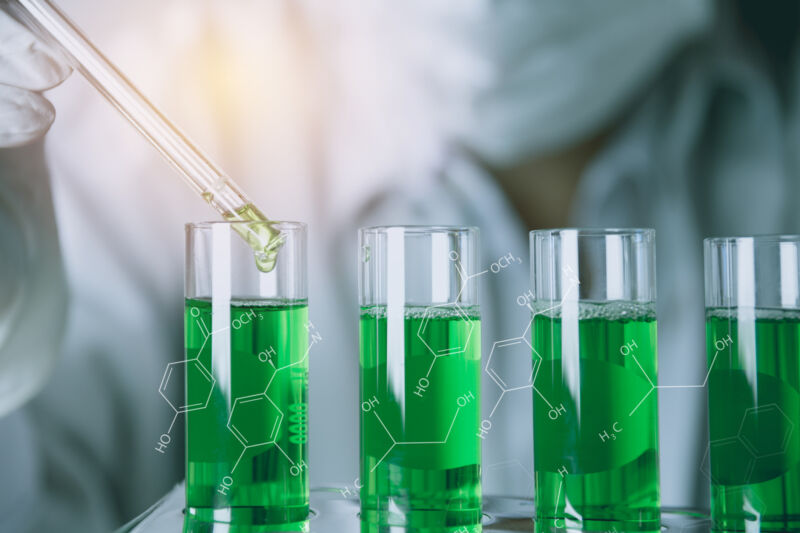

Turning waste into gold drugs
source link: https://arstechnica.com/science/2022/05/turning-waste-into-gold-drugs/
Go to the source link to view the article. You can view the picture content, updated content and better typesetting reading experience. If the link is broken, please click the button below to view the snapshot at that time.

Upcycling —
Turning waste into gold drugs
Given waste as starting material, software finds viable reaction path to drugs.
John Timmer - 5/3/2022, 3:13 PM

Countless things we use in modern societies, from food to food containers, rely on industrial-scale chemistry. That chemistry often produces materials that aren't useful to us—and in some cases, they're hazardous or toxic. Not only are these materials wasteful, but paying to dispose of them safely can add to the costs of materials.
Early developments in green chemistry have mostly focused on finding reaction pathways that limit the production of unwanted byproducts and the use of toxic solvents. But researchers are looking beyond that, trying to find ways to better integrate chemistry into a circular economy, where source materials are either sustainable or recycled.
In a recent example of this, researchers developed a software system that was programmed with a list of known, viable chemical reactions and a set of constraints that limit the use of toxic chemicals and extreme heat or cold. Fed with a list of common chemical wastes, it found pathways that used them as starting materials for the production of drugs and agricultural chemicals.
Designing Allchemy
That's not a typo; most of the authors of the paper work for a company called Allchemy, which focuses on computer-aided design of chemical pathways. The academic literature in chemistry is filled with papers describing reactions that open and close ring structures, add methyl groups, remove oxygens, and much more. The new paper draws on a 10,000-entry database of potential reactions, with each reaction's entry containing information on potential starting materials, conditions, solvents, and more. The entries are also general. Rather than working on one specific molecule, the reactions are tracked as working with entire classes of related molecules, such as anything with an alcohol.
AdvertisementPerhaps most relevant to the subject at hand, there's also data, taken from a large range of government regulators, on the need for hazardous materials or solvents. Greener alternatives are suggested where they're available.
Using this database, the researchers started with a group of 189 chemicals that are common waste products of industrial reactions. Each was compared with the database's potential chemical reactions to see what modifications could be performed. This produced a larger second generation of molecules created by these reactions. The molecules were put through the analysis again and again, creating an ever-growing population of chemicals that could be produced, starting with waste products. The goal was to produce a high-value chemical, either one of about 2,500 approved drugs or 1,650 agricultural chemicals.
On its own, this process would quickly grow to a point where there is a completely unmanageable number of chemicals to track. To keep things computationally tractable, the team screened through all the chemicals at each generation and threw out anything that didn't look related to the target list of drugs and agricultural chemicals. This process was used to keep the number of chemicals in each generation to about 10,000 to 100,000.
This method created a large network of reactions that either reached a desired chemical or produced something very similar to it (which might be converted with a simple additional reaction). To figure out which pathways through that network made sense, the researchers created a "score" for each potential reaction. Points were subtracted if a reaction involved a toxic chemical or solvent, involved extreme temperatures, or produced large or complex waste products. A score would be boosted when consecutive reactions didn't require a change in solvent. The higher a score after this process, the more likely the reaction would be used.
For example, starting from wastes, it's possible to make the painkiller acetaminophen in a four-step reaction pathway. But that pathway involved the use of two toxic chemicals; a five-step process avoided this and ended up scoring higher overall.
Page:
Recommend
About Joyk
Aggregate valuable and interesting links.
Joyk means Joy of geeK